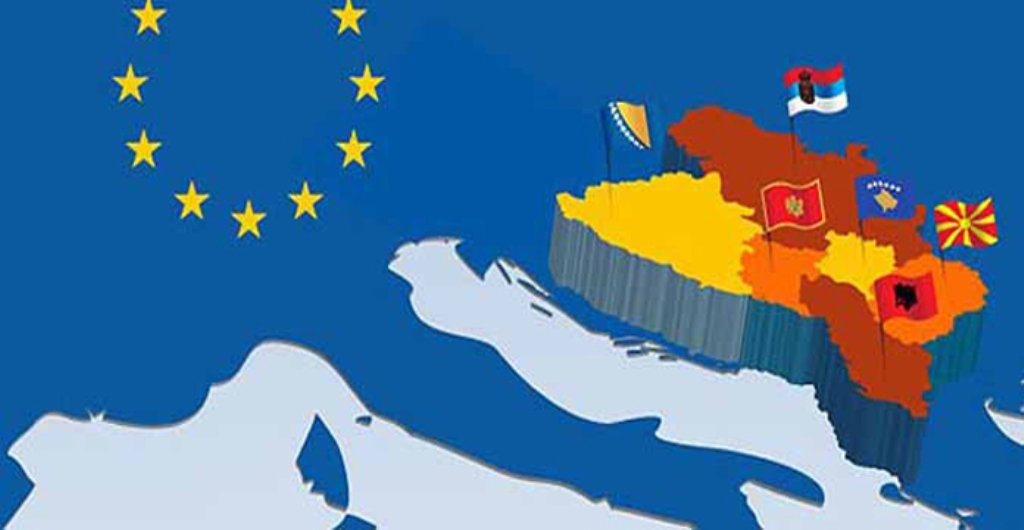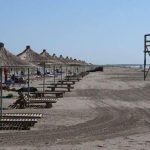TIRANA, Apr. 23- The European Bank for Reconstruction and Development (EBRD) aims to invest another 1.1 billion euros in the Western Balkans this year, with a focus on the private sector, connectivity and transition to green economy, as told by EBRD president Suma Chakrabarti.
Chakrabarti told SeeNews in an emailed interview that EBRD is a long-standing partner of the region which is committed to support the building of an economy that allows its people, and especially the young, to deploy their talents and reap the benefits of their efforts in their own country. He said that strong growth to finance the needs of the countries is needed, but it also needs to be sustainable and inclusive growth to serve their people.
In Kosovo, the EBRD is aiming to increase its investment significantly, up to 100 million euro a year over the coming period, from 52 million euro in 2018. There is a total of 363 million euros invested in 63 projects in Kosovo to date. The challenges targeted to be tackled are similar as in the rest of the region, fostering the private sector’s potential, strengthening integration and addressing the energy challenge.
The international lender invested more than 1.1 billion euro in the Western Balkans through 67 projects during 2018. Their priorities are the development of the private sector as the engine of growth, jobs and innovation; connectivity as a concept supporting the integration of the region not only in a physical sense (such as infrastructure), but also through helping trade and regional investments and to create the conditions for EU approximation; and transition to a green economy by addressing urgent environmental challenges and also increasing the countries’ reliance on renewable sources of energy.
“We are working closely with the authorities to finalise the regulatory framework in a form that will unlock significant investment in clean, domestic power,” said Chakrabarti regarding renewable energy.
Connectivity
The EBRD president also said he is confident that the bank’s annual meeting in Sarajevo in May will help boost investments in the whole region. The bank has put connectivity at the centre of its annual meeting in Bosnia and Herzegovina on May 8 and 9. Chakrabarti explained that the concept of connectivity includes “soft” and “hard” elements. Soft connectivity includes the creation of a legal and institutional environment in line with the EU approximation process which is the countries’ stated goal.
“Progress here is essential also in order to mobilise investment. Investors need the protection of a well-functioning system based on the rule of law,” said Chakrabarti.
Eliminating tariff and non-tariff barriers to trade is another key component as all countries in the Western Balkans would hugely benefit from more trade, adding that while the process of EU integration is essential, it is equally important for all countries of the Western Balkans to make progress with their regional integration. In line with this vision, the EBRD hosts a regional investment summit every other year with all six Western Balkans leaders.
Chakrabarti noted that developments like the linking up of national stock exchanges, the establishment of a regional business registry or the creation of a regional investment platform with active support from all chambers of commerce are all steps in the right direction.
Serbia’s Business Registers Agency and the Central Register of North Macedonia, with the support of the EBRD set up the Business and Financial Data Exchange (BIFIDEX) on April 1, a Western Balkans online registration portal, which will serve as a one-stop information point for businesses and investors, providing updated information from national business registry agencies.The database currently includes over 500,000 companies and provides information about company ownership, governance, financial reports and organisational changes, allowing interested parties to search for companies active in a specific sector, a geographical location or other predefined criteria.
“Hard connectivity is about overcoming physical barriers such as the opening of border crossings but, more than anything, the creation of a transport and energy infrastructure that links the countries among themselves and also with the wider neighbourhood,” Chakrabarti said. As being in the 21st century, infrastructure must include the components for a digital economy such as modern broadband. EBRD is supporting a joint trading platform of seven stock exchanges in Southeast Europe, by way of a grant to establish an electronic system for order-routing.
Besides support for the Western Balkans’ regional integration, the EBRD is strongly committed to its EU integration with investments as well as with advice on economic and institutional reforms. It is also a major investor in most big transport and energy infrastructure projects connecting the region to Europe. They are heavily involved in investments in environmental infrastructure such as wastewater treatment or solid waste management, which is another area of support for the countries to implement the EU acquis. They are also helping build better institutions within our regional Investment Climate and Governance Initiative, in order to make EU norms part of project standards. Under this Initiative, the regional integration through supporting the regional cooperation of chambers of commerce or creating a regional investment platform through linking national stock exchanges, is promoted.
The EBRD will also focus on advising governments to bring their energy efficiency-related legislation in line with the EU law, strengthening the capacity of the competition authorities, improving public procurement and PPP legislative frameworks as these contribute significantly to increasing preparedness for EU accession while improving the business environment.
Chakrabarti said the EBRD is very pleased with the breakthrough in relations between Skopje and Athens through the name deal, which has opened the way to North Macedonia’s EU membership. Thus, the bank is committed to redoubling its investment and policy advisory efforts to support North Macedonia. To date, the EBRD has invested more than 1.8 billion euro in 113 projects in the country, of which 164 million euro last year alone.
“We see an immediate positive impact on the EU approximation project and in attracting investment,” the EBRD president commented.
Transition to green economy
Another pillar of the EBRD’s investment strategy is energy diversification through renewable energy production, improving power transmission and supporting energy efficiency improvements. In December, the EBRD board of directors approved a new five-year energy sector strategy that rules out financing of coal-fired power generation projects. The strategy emphasises on the scaling-up of investment in renewables, supporting the integration of energy systems, promoting the switch to cleaner and more resilient energy sources and facilitating electrification as a means of cleaning the economies where the bank invests.
The bank is set on making a strong contribution to help find sustainable solutions in the energy sector through a new strategy in the Western Balkans. This region is heavily dependent on coal for electricity production, and Kosovo in particular. Chakrabarti said that energy is a crucial question in the Western Balkans, where the majority of energy generation depends on coal and efficiency standards throughout the value chain leave considerable room for improvement.
“This is a serious issue for the whole region, but it is probably nowhere more acute than in Kosovo,” said Chakrabarti.
The EBRD’s goal is to create an energy sector which delivers clean, secure and affordable energy, adding that even before the bank ended new coal investments, its renewable projects had already overtaken its investment in fossil fuels. This is part of a long-term strategic plan to support the reform of countries where the EBRD invests to promote the creation of green economies. The EBRD’s target is to invest 40 percent of its annual new commitments in the green economy by 2020. The bank is pursuing this goal with a two-pronged approach, with investments in renewable sources of energy on the one hand, and investments in energy efficiency and savings on the other.










